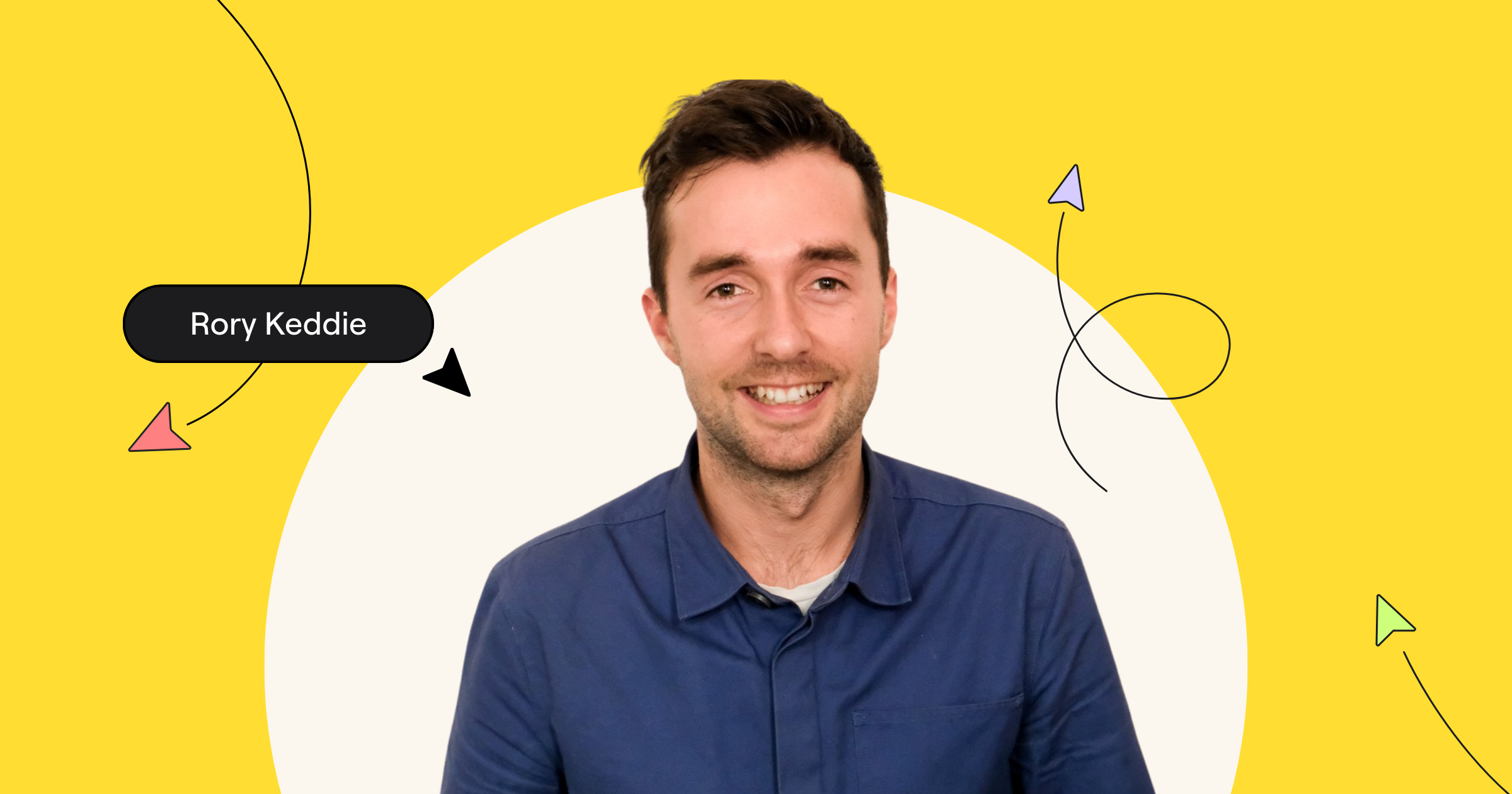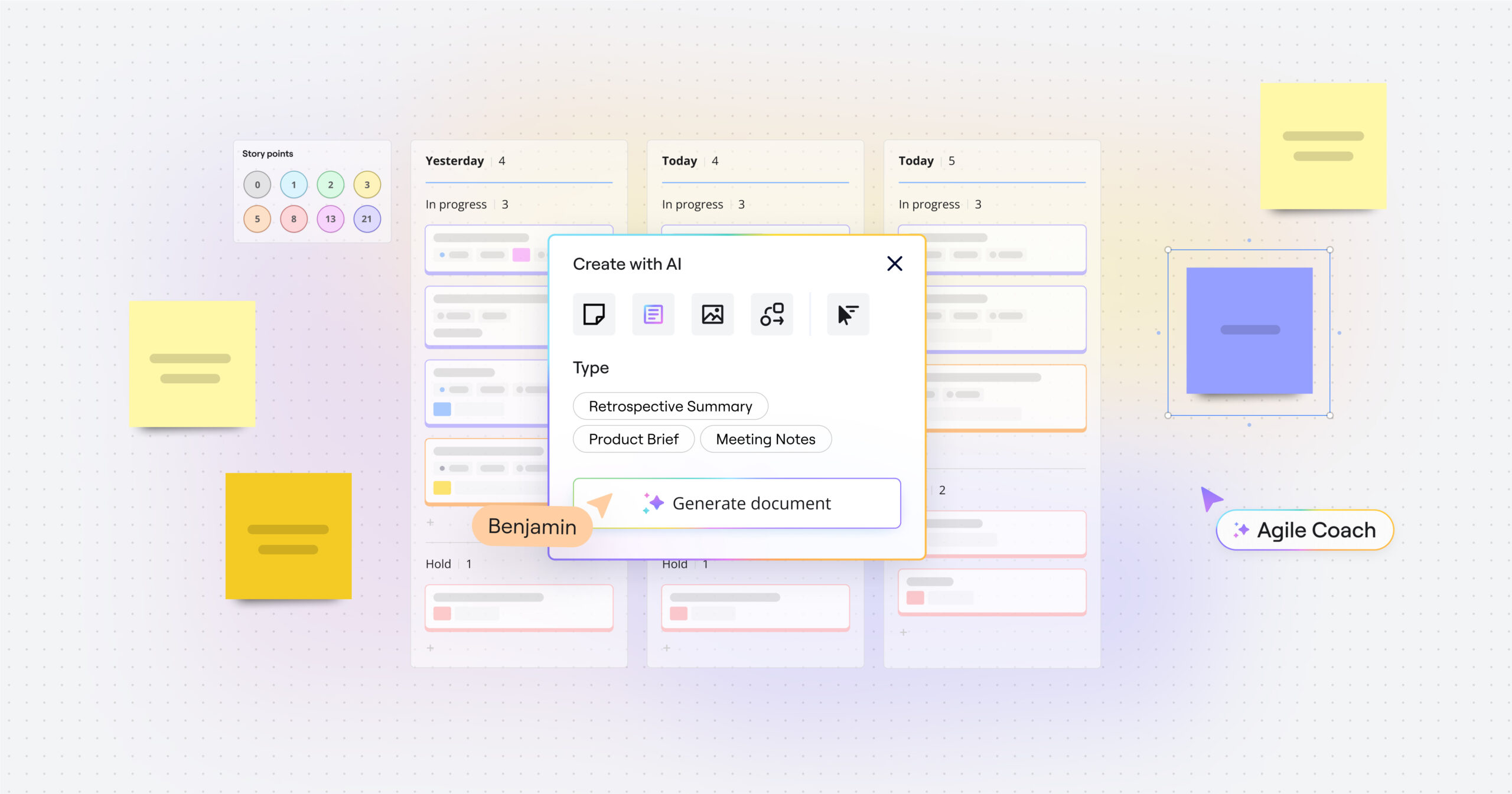I’m excited to welcome my newest colleague, Rory Keddie, who recently joined us as a product evangelist out of London.
Rory sat down with me virtually to share his journey leading up to Miro, including how he’s used the platform and his thoughts on how to do Agile. He also shared some wins, lessons he’s learned along the way, and where he thinks the future of this work is going — including the role of AI.
Welcome to the team, Rory! We’re really excited to work with you. So what brought you to Miro, and what were you doing before?
Hello, Dave! It’s been a great first two months at Miro. As you know, I have been a big Miro user and champion of the product for a good while, so I’m very excited to be part of the team.
Before joining Miro, I enjoyed a varied and interesting career in tech startups, consulting, and innovation roles within large multinational companies. The thread that connects it all is my love for bringing new ideas to life, which is a part of what drew me to Miro and its mission to empower teams to build the next big thing.
Previously, I worked on some great projects, including launching Vogue Business for Conde Nast, the Feast app for The Guardian, and building the Innovation Academy at Magnetic, a training program we delivered to clients like PepsiCo — all through Miro.
That’s quite impressive! What kind of teams did you work on, and how did they do Agile?
When I worked at Magnetic, a leading UK innovation and design agency, one of our values was working shoulder to shoulder with clients. We often would work on a specific challenge or opportunity alongside the client team, whilst introducing and embedding new ways of working and methodologies, like Agile, Design Thinking and Lean Startup.
We would set ourselves up as a scrum team from the start of a project, working in two-week sprints, long before anyone started thinking about code. The benefits of Agile ways of working — breaking tasks down into manageable chunks, setting clear goals, and taking time to regularly step back, reflect, and make improvements — extends beyond software development.
Read more: Agile beyond software development: How to empower non-tech teams
So true. Agile can be applied broadly, but it’s also easier said than done. What experience or experiences stand out to you where that rang true?
Following Agile practices, like sprints, standups and retros, does not mean you’re being agile. I worked at a tech startup early in my career that had bold ambitions and brilliant people working there. Unfortunately, we struggled to translate the bold ambitions into manageable tasks, spent too much too quickly, and didn’t have enough time and money to pivot. We had the ambition, the Agile teams and practices, but the culture and business plan was not agile.
That actually happens a lot. It’s never great living through it, but it’s a great lesson to learn. Sooner than later, for sure! On a related note, what were common pain points you experienced on Agile teams, and how were they addressed?
Often in bigger organizations, the reliance on other teams can often be a big blocker or slow things down. What is a priority for your team might not necessarily be for another and this can be frustrating. On one project we needed support from the data science team to build a model, but they were very in demand and it took a lot of influencing and stakeholder support to get our request prioritized. Looking back it would have been useful to have the Miro dependencies app to visualize how we were reliant on other teams to proceed.
Miss our report on mental blocks? Here’s how to help teams get unstuck.
Absolutely! It saves a lot of time and effort. This is a great tie-in to my next question: What should success look like for Agile teams?
Success always looks different for every team, and it depends how you define it. One part of success will be the success of what you’re building: If it’s a product, you will likely be after engaged, satisfied users and a growing revenue stream. Of course, success will always extend beyond users and revenue to the team. It’s a cliche to say, but a successful team is a happy team. And a happy team tends to be one that collaborates well, in which individual and team needs are met, where people feel comfortable contributing, and are supported and actively bought into the vision for the product and the purpose of the company.
I like that definition! And what about tools? How important would you say they are in Agile teams day-to-day?
Tools are integral to any Agile team, but it’s always worth remembering the first value of the Agile Manifesto: Individuals and interactions over processes and tools. This is what I spoke about at Agile 2024: If tools can’t empower the individuals in teams and facilitate effective interactions, then they’re not doing a very good job. Thankfully, Miro does a great job here, including helping people overcome some of the pains I mentioned earlier by providing a space for them to collaborate visually.
What are some common misconceptions about Agile?
The two biggest ones are that Agile is just for software development teams, and that it doesn’t require any planning. I’ve seen the benefits of Agile extend beyond software teams, and while Agile emphasises flexibility and adaptability, it still requires careful planning. PI planning is a good example of this — bringing teams together to coordinate plans. Miro has some great templates to help with this.
Looking for a PI planning template? Here are three: Kanban Pizza Game, Piggybank Scrum Simulation, Scrum Jeopardy! With Custom Jeopardy! Board. Need something more cut and dry? No problem! (PI Planning Templates)
Great call-out! Last question: What do you think the future of Agile will look like? Especially with the rise of AI?
This is a big question! I think many of us are currently grappling with the question of how AI will impact our jobs.
I’ve recently been reading “Co-Intelligence: Living and Working with AI” by Ethan Mollick, a Professor of Management at Wharton. Mollick shares his vision for co-intelligence, where humans and AI work together as collaborators. I like the idea of AI as a collaborator and I think this is where the challenge lies for Agile teams: finding the most effective ways to leverage AI as a coach or an extra pair of hands on the team. Agile is ultimately about humans working well together. AI as a collaborator should serve to enhance this, by accelerating speed to market and improving the quality of the work.
This idea of AI as a collaborator is already appearing in Miro with the recent introduction of Sidekicks — nifty AI-assistants that can support all sorts of tasks, from adding more ideas to a brainstorm to giving feedback on a presentation. I’m excited for Miro users to start collaborating with their sidekick!
This has been great, Rory! Thank you for your time. You’re gonna love it here!
Thanks for having me, Dave! I’m looking forward to all my future connections with this community.




